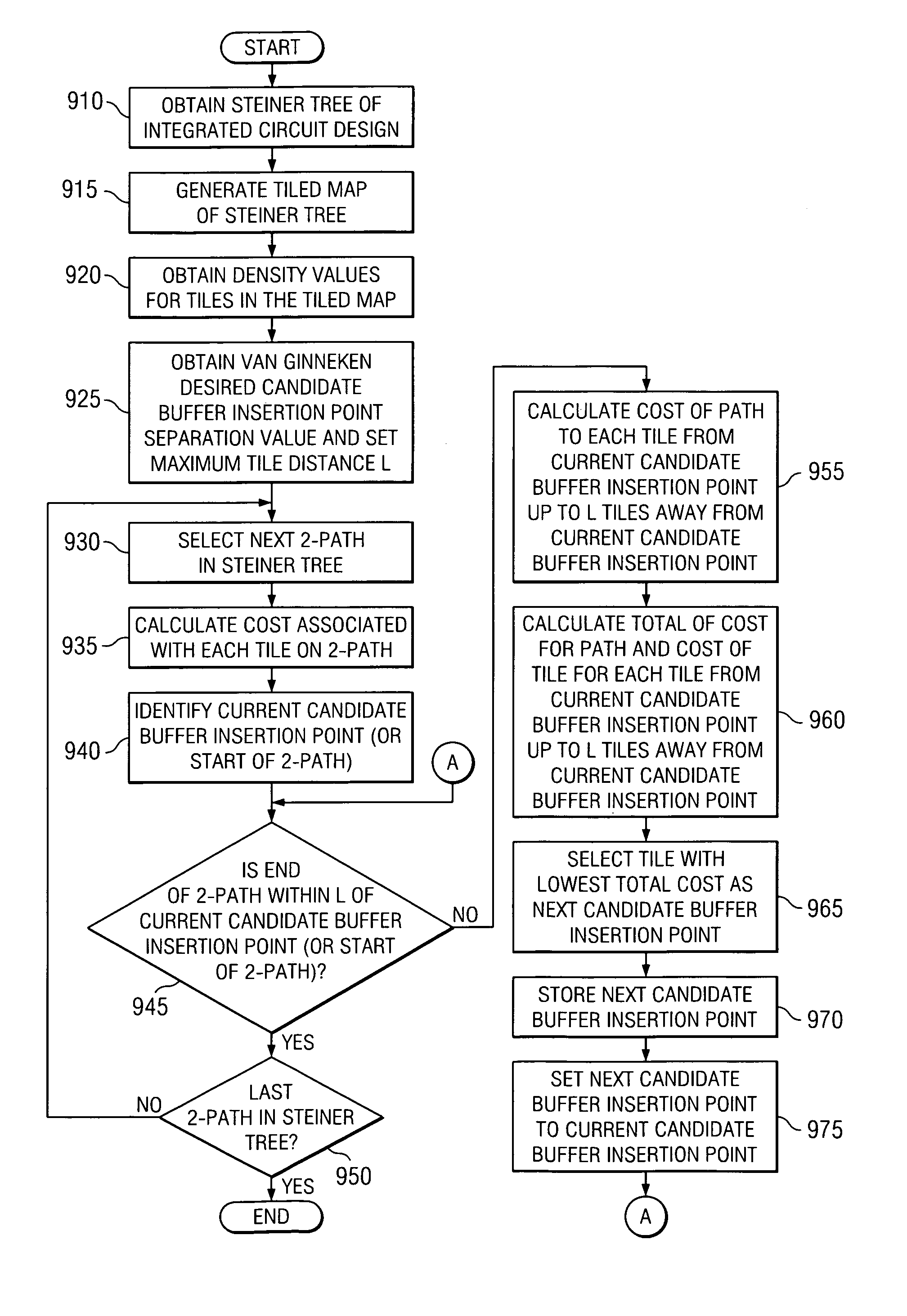Method and apparatus for performing density-biased buffer insertion in an integrated circuit design
a technology of integrated circuit design and buffer, which is applied in the direction of computer aided design, program control, instruments, etc., can solve the problems of increasing the number of buffers required, reducing the delay, and increasing the difficulty of managing the density of the integrated circuit design, so as to minimize the impact of performan
- Summary
- Abstract
- Description
- Claims
- Application Information
AI Technical Summary
Problems solved by technology
Method used
Image
Examples
Embodiment Construction
[0027]The present invention provides a method, apparatus and computer program product for performing density-biased buffer insertion in an integrated circuit design. As such, the present invention is preferably implemented in a data processing device. The data processing device may be a stand-alone computing device or may be a distributed data processing system in which multiple computing devices are utilized to perform various aspects of the present invention. Therefore, the following FIGS. 1 and 2 are provided as exemplary diagrams of data processing environments in which the present invention may be implemented. It should be appreciated that FIGS. 1 and 2 are only exemplary and are not intended to assert or imply any limitation with regard to the environments in which the present invention may be implemented. Many modifications to the depicted environments may be made without departing from the spirit and scope of the present invention.
[0028]With reference now to the figures, FIG...
PUM
 Login to View More
Login to View More Abstract
Description
Claims
Application Information
 Login to View More
Login to View More - R&D
- Intellectual Property
- Life Sciences
- Materials
- Tech Scout
- Unparalleled Data Quality
- Higher Quality Content
- 60% Fewer Hallucinations
Browse by: Latest US Patents, China's latest patents, Technical Efficacy Thesaurus, Application Domain, Technology Topic, Popular Technical Reports.
© 2025 PatSnap. All rights reserved.Legal|Privacy policy|Modern Slavery Act Transparency Statement|Sitemap|About US| Contact US: help@patsnap.com



